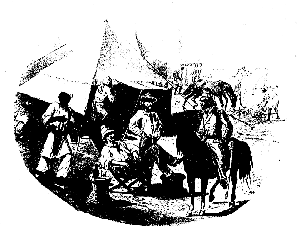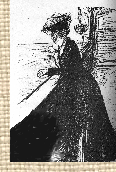 |
 The world of Anglo-India vanished on August 15th 1947, when a new nation was born. As India threw off the shackles of three centuries of colonial rule and its people strode proud and free into the future, the British packed their bags, their polo sticks, their regimental jackets, and their memories—and went home to "Blighty". Not everyone, however, was glad to see them go. Among those left behind were over 300,000 people of mixed European and Indian descent, who traced their English, French, Dutch or Portuguese ancestry from the paternal line going back to the 17th and 18th centuries. Of all the European traders ( and colonists as time went on), the British gained dominance in the guise of the East India Company. At that time, few women were up to making the arduous sea voyage (and the cultural transition) from the soft green countryside of England to the searing plains of "Hindoostan". Consequently the officers, ensigns and clerks of the Company were encouraged to marry local Indian women and their children carried no stigma of mixed blood in those far-off days.
The Anglo-Indians, were more "Anglo" than "Indian". Their mother-tongue was English, and so was their religious upbringing, as were their customs and traditions. While most of them married within their own Anglo-Indian circle, there were many who continued to marry expatriate Englishmen. Very few, if any, married Indians. The same rigid social barriers that the British erected between themselves and the Anglo-Indians, also existed to isolate the Anglo-Indians from the vast majority of Indians. Neither the British nor the Anglo-Indians made any attempt at appreciating Indian music, art, dance, literature or drama. The "natives" were seen as idol worshippers, and not particularly clean ones at that, with their habits of blowing their noses, spitting and defecating in public. Not to mention eating with their fingers while sitting cross legged on the ground. The aloofness between themselves and their Indian subjects were of little concern to the British, and even less so now that they were going ‘home’. But the Anglo-Indians, left in a twilight zone of uncertainty, felt a bitter sense of betrayal – and dismay at the fact that Britain made no effort to offer her swarthier sons any hospitality in the land where their forefathers had been born. Many Anglo-Indians, apprehensive of changes that would surely come with India’s independence, chose to leave India. The 1950s and 1960s saw a steady stream of departures as about 150,000 Anglo-Indians, seeking wider horizons and better job prospects, emigrated to Australia, Britain, Canada, the U.S.A. and New Zealand, The exodus has continued through the decades up to the present time—although now, Anglo-Indians, like their Indian contemporaries, leave India not for reasons of uncertainty, but because the West offers a dazzling array of educational and career opportunities. Much has been said about the Anglo-Indians. Unfortunately a great deal of it—including novels like Bhowani Junction and movies such as Cotton Mary—has focussed on stereotyped characters and situations which either oversimplifies or exaggerates reality. Anglo Indian men have been portrayed as feckless idlers; the women as promiscuous sirens. Over the past few decades, however, doctoral studies in Australia, the U.K., Canada and the U.S.A. have examined the Anglo-Indian Community (the capital "C" is commonly used to denote Anglo-Indian identity) under a more objective microscope. They point out that the number of notable people within its ranks has been disproportionate to the size of this small Community in the services (military and airforce brass), the civil administration, the arena of arts and entertainment and in the field of athletics. While Anglo-Indian women once followed the traditional occupations of nursing, teaching and secretarial work, they are now active in professional fields: medicine, law, and accountancy. Some have found their niche in social work, or pursue political careers in the State, or Central government legislative assemblies. For all that, Anglo-Indians were, and still are, a fun-loving lot. They have always had the capacity to thoroughly enjoy themselves at a dance, a sing-a-long session or a party. But the perception that this applies only to Anglo-Indians is outdated. In today’s Mumbai, Kolkata and Delhi, Indian yuppies gyrate with vigorous abandon on nightclub dance floors. The Anglo Indian women who were deemed "fast" because their necklines were daringly décolleté, who wore lipstick, smoked, drank and went out unchaperoned on dates, now have their counterparts in all three cities - most of them sophisticated, upper-crust Indian women. The Anglo-Indian identity is disappearing fast. Those who have found new lives abroad have merged into the mainstream. Other than the nostalgic reminiscences of an older generation (much of it irrelevant to the busy day-to-day concerns of their children and grand-children) their Indian past has all but faded into oblivion. In India, the Community are indistinguishable from their Indian friends and neighbours. The women wear saris or salwar kameez, the kids disco enthusiastically to Hindi film hits and watch Bollywood movies. Although English remains their first language, they speak the local vernacular with ease and fluency. I am glad to have been part of a culture known for its good cheer, its generous hospitality and its ideals of keen sportsmanship. And I am grateful too, that I was born, grew up and lived in a country like India with its enormous diversity of people, languages, religions and traditions. Today, however, I am - by choice - a proud Canadian. ©Margaret Deefholts |
 |
 |
 |

 Later,
however, with the construction of the Suez Canal in the 19th century,
the travel time between the two countries was greatly reduced and
women no longer hesitated to sally forth from England to join husbands
or seek marriage prospects among British army and the civil service
officers. They brought with them all the class snobbery and insularity
of the Victorian era, and offspring of mixed descent came to be
regarded with disdain.
Later,
however, with the construction of the Suez Canal in the 19th century,
the travel time between the two countries was greatly reduced and
women no longer hesitated to sally forth from England to join husbands
or seek marriage prospects among British army and the civil service
officers. They brought with them all the class snobbery and insularity
of the Victorian era, and offspring of mixed descent came to be
regarded with disdain.